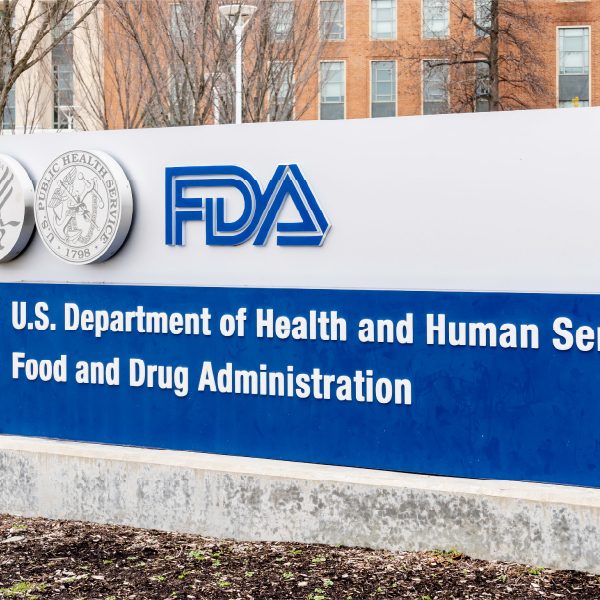Alzheimer’s Awareness and the Future of Clinical Development: Face the Scope and Don’t Lose Hope

In the United States, the number of patients with Alzheimer’s disease is projected to increase from the current prevalence of around 5.5 million to around 14 million in 2050. These sobering numbers reflect an urgent need for increased awareness and proactive decision making.
The decisions we make now, as citizens, caregivers, and scientists, will greatly impact the future health and well-being of our rapidly aging population. There is no time for delay. Policy makers must determine the best means of allocating limited resources to support vulnerable patients and their frequently overstressed and exhausted caregivers, while also funding research into new treatments.
Pharmaceutical professionals will need to consider new strategies in clinical research to ensure a continued robust pipeline and eventual cure. Greater awareness is a critical first step. In that spirit, I’d like to provide some perspective on Alzheimer’s awareness as a former scientist, as a current regulatory professional, and as a grandson who has been directly impacted by this disease.
Awareness means believing we won’t go another 111 years without a cure
In 1906, Dr. Alois Alzheimer first described patients with memory loss and cognitive decline associated with amyloid plaques and neurofibrillary tangles. If he were able to get into a time machine and travel to 2017, he would no doubt be astounded by advances in genetics, biochemistry, and molecular biology. Leafing through the scientific journals, he would discover that the plaques and tangles he first observed under a microscope have been characterized in remarkable detail, resulting in a high-definition molecular-level motion picture of the disease that can be followed through time and targeted down to the level of a single location on a single protein.
Unfortunately, once he started seeing patients again, Dr. Alzheimer would quickly recognize the clinical disease progression he first described 111 years earlier. Despite the development of drugs that can provide symptomatic improvement in memory and cognition, the clinical progression of Alzheimer’s disease remains much the same in our own time. He might wonder why it has proven so difficult to develop drugs that alter the progression of the disease bearing his name, and how much further into the future he would need to go to find a cure.
He certainly would not need to go another 111 years, but success in the shorter term will require consideration of lessons learned in the period of drug development leading up to this day.
Awareness means appreciating that that no study is a failed study
Applying basic research findings to Alzheimer’s disease has proven uniquely challenging. It has been 15 years since the approval of a new treatment in the United States. During this period, the development goal in Alzheimer’s therapy has shifted from treating symptoms to modifying the course of the disease. This transition has required a substantial rethinking of the clinical trial toolkit developed in the earlier era of Alzheimer’s clinical research.
To understand why the toolkit needed to be rethought, consider some of the questions that arise when a potential disease modifying treatment fails to show efficacy in a Phase 3 clinical trial:
- Did the study enroll the wrong patient population?
- Did the study fail because the study drug was given too late in the disease progression?
- Was the clinical endpoint used to measure the effect of the study drug just not sensitive enough?
- Was the study drug given at the right time in disease progression, but targeting the wrong mechanism?
- Was the study drug targeting the right mechanism, but with insufficient activity to produce a statistically significant effect?
Each of these questions has relevance when Alzheimer’s disease modification studies do not meet their efficacy endpoints. Importantly, answering these questions would require a major change in design for any subsequent clinical trial. The need for these changes has introduced additional uncertainty not present in earlier trials.
By and large, these earlier trials relied upon consistent study designs, endpoints, and patient populations chosen based the clinical symptoms of Alzheimer’s disease. Since it is now well understood that these clinical symptoms occur late in the disease progression, possibly too late for disease modifying treatments to have much effect, a premium is placed on early treatment and detection. But, in evaluating asymptomatic or very mild patients, the consistency afforded by the earlier clinical trial model no longer exists.
Thus, a more standard clinical trial framework for disease modification is a critical step in increasing the pace of Alzheimer’s drug development, and any clinical trial that helps to eliminate uncertainty makes an important contribution to the consistent design of future trials.
Awareness means knowing that the right therapy will rely upon the right timing, the right test, and the right target
Because the disease process begins years before any clinical signs appear, designing Phase 3 trials for drugs intended to treat Alzheimer’s disease is a complex endeavor. With disease modifying treatments, the goal is to treat as early as possible, but there is also a threshold before which symptoms detected with the tools currently available are not necessarily predictive of Alzheimer’s disease.
For instance, if preliminary clinical trial data suggest that a drug has potential efficacy in patients with mild Alzheimer’s disease, but not in moderate or severe cases, a subsequent clinical trial may be designed to enroll patients at an earlier time. However, some of these patients may not actually have Alzheimer’s disease, ultimately making the efficacy of the drug hard to measure over the course of a clinical trial. For this reason, the right timing is critical.
The recent failure of amyloid-targeting antibody therapies, solanezumab, bapineuzumab, and gantenerumab in patients with mild or very early (prodromal) Alzheimer’s disease has left researchers searching for earlier points of intervention.
However, the right timing cannot be determined without the right test. In the clinical trial context, the right test has two key functions: to catch the signs of the disease in patients early enough to treat the disease, and to exclude from the trial those patients who will not go on to develop clinical symptoms.
With greater awareness of disease progression, researchers are increasingly turning to indicators of Alzheimer’s pathology that precede clinical symptoms. In drug development, these indicators are known as biomarkers. Biomarkers might include specific genes associated with Alzheimer’s disease such as APOE-4, as well as proteins associated with the disease taken from blood or cerebral spinal fluid. In addition to early detection, one of the ultimate goals is to establish a correlation between biomarkers and clinical symptoms that is convincing enough to allow the biomarker to be used as a primary or co-primary endpoint in late-stage clinical trials. Such a test, known as a surrogate endpoint, could lead to optimized timing of treatment and accelerated approval of new drugs. This is an area of intensive research, and shows great promise in bridging the gap between basic and clinical research.
Biomarkers and the drugs they evaluate share an important trait: both must be directed at right target to do their respective jobs. In Alzheimer’s research, this means viewing the large body of data supporting the amyloid hypothesis of Alzheimer’s disease progression in the context of the clinical failure of drugs designed around this hypothesis. As described above, this could involve testing drugs earlier in the disease progression. Because amyloid-beta is a very early biomarker, this approach might make the most sense for amyloid targeting drugs. Drugs targeting tau and other markers of neurological damage that succeed amyloid plaque deposition will also be critical, particularly in light of the risks and unknowns associated with studies in very early or asymptomatic patients. Combination therapies targeting multiple components of the disease mechanism may also be essential in reaching a clinically meaningful effect size.
Awareness means face the scope and don’t lose hope
In 2017, the pathway to a cure looks challenging. That said, one of the things that unites us all as patients, caregivers, healthcare professionals, and researchers is the understanding that there are absolutely no easy answers with this disease. The need for hard work, courage, and sacrifice extends far into the foreseeable future. In facing the scope, we need to commit to this. Publically, facing the scope means more funding, particularly for basic research, research into early diagnosis, including biomarkers, and ambitious long-term studies that evaluate disease progression before clinical symptoms appear.
Professionally, it may mean greater collaboration and pooling of resources to design and conduct complex and expensive studies taking upwards of a decade to complete. On a personal level, it may be volunteering or going the extra mile to check in on a loved one with the disease. There is much work to be done and much to be hopeful about. We do not need to build a time machine to see the cure for this disease. With support, collaboration, and tremendous effort, the future can instead be achieved through the tools we have now.
by Ben Kaspar











